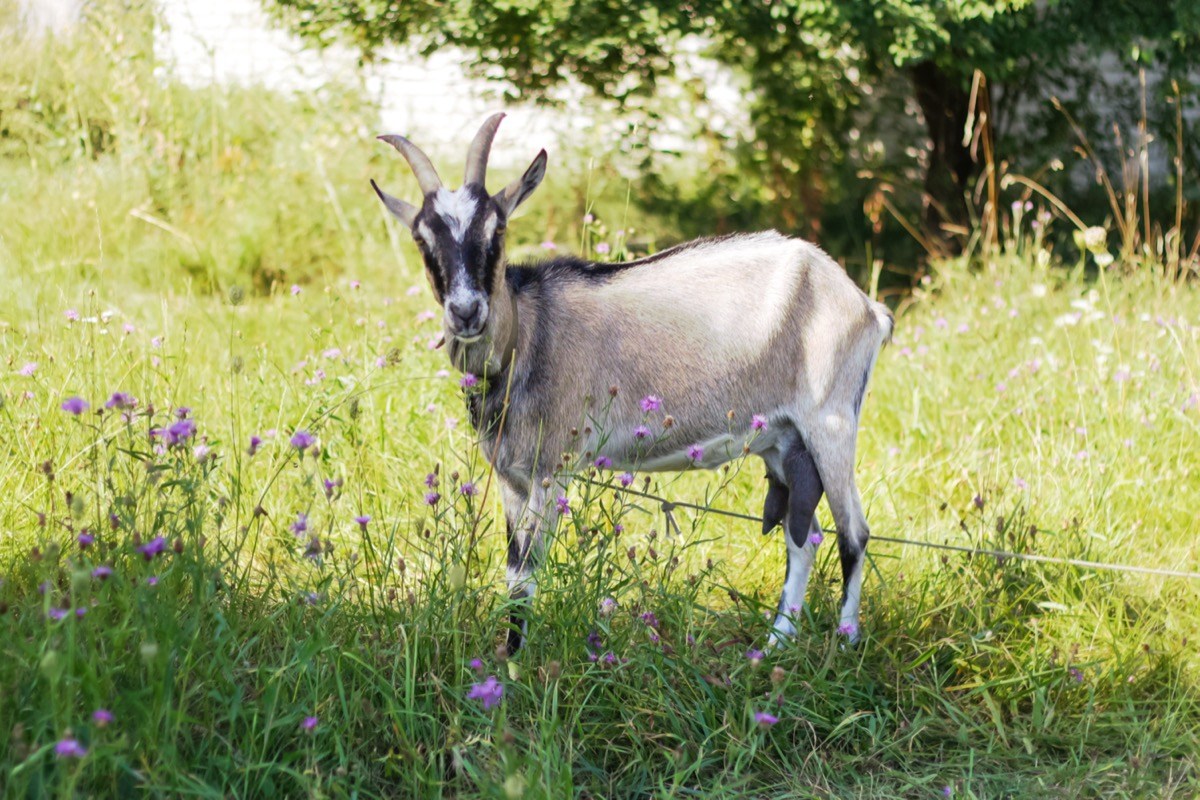
The Toggenburg goat, named after the Toggenburg valley in Switzerland where it originated, is a remarkable breed known for its productivity and distinctive appearance. These goats are highly valued for their milk production, making them popular among farmers and dairy enthusiasts alike. With their unique markings, sturdy build, and calm temperament, Toggenburg goats have gained recognition and appreciation worldwide.
In this article, we will explore 11 fascinating facts about Toggenburg goats, shedding light on their history, characteristics, and contributions to the agricultural world. Whether you are a goat enthusiast, a farmer looking for a new breed to add to your herd, or simply someone curious about these amazing animals, this article will provide you with valuable insights into the world of Toggenburg goats.
Key Takeaways:
- Toggenburg goats, originating from Switzerland, are known for their gentle nature, excellent milk production, and adaptability to different climates, making them valuable and charming animals for farmers and petting zoos alike.
- With their distinctive coloration, long lactation period, and recognized breed status, Toggenburg goats stand out as durable, expressive, and valuable members of the goat community, bringing joy and productivity to farms and beyond.
Toggenburg goats originated in Switzerland.
The Toggenburg breed of goats has its roots in the Toggenburg region of Switzerland. They are one of the oldest known dairy goat breeds and have been bred for their milk production for centuries.
Toggenburg goats are known for their distinctive coloration.
Toggenburg goats have a unique color pattern with varying shades of brown. They typically have white markings on their face, legs, and tail. This coloration sets them apart from other goat breeds.
Toggenburg goats are excellent milk producers.
One of the main purposes of breeding Toggenburg goats is for their milk production. They are known to produce high-quality milk with a rich and creamy texture. Toggenburgs are often preferred by dairy farmers for their high butterfat content and excellent milk yield.
Toggenburg goats are medium-sized animals.
Toggenburg goats are of medium size, with does (female goats) weighing around 120-135 pounds and bucks (male goats) weighing between 150-175 pounds. Their compact size makes them easy to handle and manage.
Toggenburg goats have a gentle and calm temperament.
Toggenburg goats are known for their friendly and gentle nature. They are docile animals, which makes them easy to handle and suitable for various types of goat husbandry, including petting zoos and therapy programs.
Toggenburg goats are adaptable to different climates.
Due to their origins in the mountainous regions of Switzerland, Toggenburg goats have developed a high level of adaptability to various climates. They can tolerate both hot and cold conditions, which makes them suitable for different geographical regions.
Toggenburg goats are excellent foragers.
Toggenburg goats have a natural instinct for foraging. They are skilled at finding and utilizing a wide range of vegetation, including grass, leaves, and weeds. Their browsing abilities make them valuable in controlling unwanted vegetation in pastures and forests.
Toggenburg goats have a long lactation period.
The lactation period of Toggenburg goats is typically longer compared to other dairy goat breeds. They can produce milk for up to 10 months after kidding, providing a steady and consistent milk supply for dairy farmers.
Toggenburg goats are known for their durability and longevity.
Toggenburg goats are renowned for their sturdy build and longevity. With proper care and management, they can live for 10 to 15 years or even more, making them a valuable investment for goat breeders.
Toggenburg goats have a distinctive gentle expression.
One of the unique features of Toggenburg goats is their gentle and attentive expression. Their eyes are expressive and convey a sense of curiosity and intelligence, adding to their overall charm.
Toggenburg goats are recognized by various breed associations.
Toggenburg goats are recognized as a distinct breed by many international and national breed associations. They have a standard set of physical characteristics and breed standards that must be met to be registered as purebred Toggenburgs.
Conclusion
Toggenburg goats are fascinating creatures that have captivated the hearts of animal enthusiasts around the world. With their distinctive appearance and gentle disposition, they make wonderful additions to farms and homesteads. Whether you’re interested in their milk production, their history, or simply their unique characteristics, learning about Toggenburg goats is sure to be an enriching experience.
From their origins in Switzerland to their adaptability to various climates, Toggenburg goats have proven themselves to be resilient and versatile animals. Their ability to produce high-quality milk makes them valuable assets to dairy farmers, while their friendly and inquisitive nature makes them beloved companions for goat enthusiasts of all backgrounds.
By understanding the 11 Toggenburg goat facts outlined in this article, you are now equipped with a wealth of information to appreciate and care for these remarkable animals. Whether you’re considering raising Toggenburg goats or simply have an interest in learning about different goat breeds, exploring the world of Toggenburg goats is a rewarding journey that is bound to leave you with a newfound admiration for these charming creatures.
FAQs
1. What is the origin of Toggenburg goats?
Toggenburg goats originate from Toggenburg Valley in Switzerland.
2. What do Toggenburg goats look like?
Toggenburg goats are medium-sized with a robust body, erect ears, and a straight face. They have a distinctive coloring of light fawn to dark chocolate brown with white markings.
3. Do Toggenburg goats require special care?
Like all goats, Toggenburg goats require proper shelter, a balanced diet, regular veterinary care, and a clean living environment. They also benefit from social interaction and exercise.
4. Are Toggenburg goats good milk producers?
Yes, Toggenburg goats are known for their excellent milk production. They have high butterfat content in their milk, making it ideal for cheese and butter making.
5. How long do Toggenburg goats live?
Toggenburg goats typically live for about 10 to 12 years, although with proper care, they can live even longer.
6. Can Toggenburg goats adapt to different climates?
Yes, Toggenburg goats are adaptable and can thrive in various climates. However, they do best in moderate climates that are neither too hot nor too cold.
7. Are Toggenburg goats friendly?
Yes, Toggenburg goats are known for their friendly and docile nature, making them great companions and pets.
8. Do Toggenburg goats have any specific health concerns?
Toggenburg goats, like all goat breeds, are susceptible to certain health issues such as parasites, respiratory infections, and hoof problems. Regular health checks and vaccinations are necessary to keep them healthy.
9. Can Toggenburg goats be used for meat production?
While Toggenburg goats are primarily bred for milk production, their meat is also flavorful and can be consumed. However, meat production is not their primary purpose.
10. Are Toggenburg goats good for beginner goat keepers?
Yes, Toggenburg goats are a popular choice for beginners due to their easy-going nature and adaptability.
11. How many Toggenburg goats should be kept together?
Goats are social animals, so it’s ideal to keep at least two Toggenburg goats together. However, ensure proper space and resources are available for each individual goat.
Was this page helpful?
Our commitment to delivering trustworthy and engaging content is at the heart of what we do. Each fact on our site is contributed by real users like you, bringing a wealth of diverse insights and information. To ensure the highest standards of accuracy and reliability, our dedicated editors meticulously review each submission. This process guarantees that the facts we share are not only fascinating but also credible. Trust in our commitment to quality and authenticity as you explore and learn with us.


